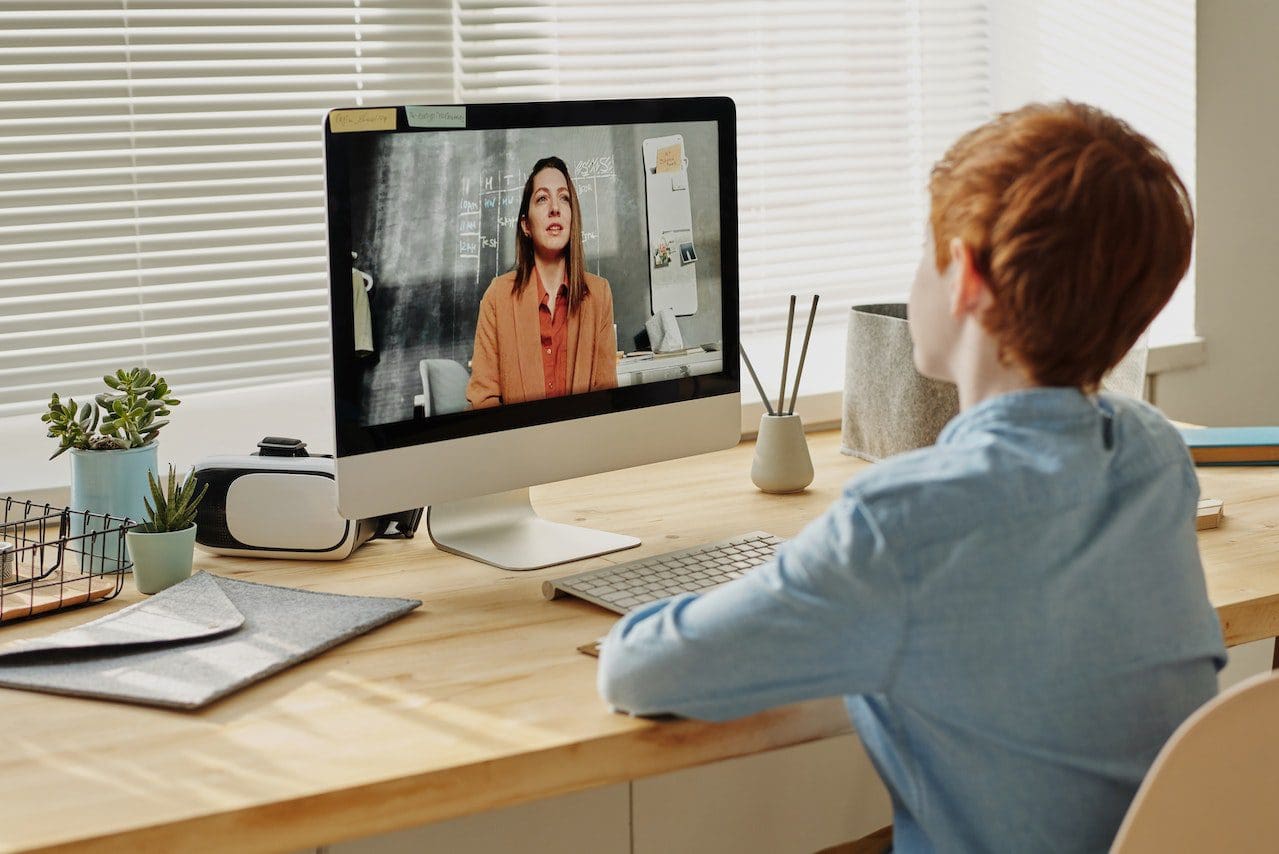Lights, camera, action! In today’s digital age, video production has become an invaluable tool in the realm of education. Gone are the days of monotone lectures and uninspiring textbooks. With the power of video, educators are able to captivate students and enhance their engagement like never before. From visually stunning documentaries to animated lessons that bring complex concepts to life, the possibilities are endless. Not only does video production make learning more enjoyable, but it also caters to different learning styles, ensuring that every student can grasp the material at hand. By incorporating video into the classroom, educators can create a dynamic and interactive learning environment that fosters curiosity, critical thinking, and creativity. Get ready for a thrilling educational experience as we dive into how video production is revolutionizing student engagement. Lights, camera, action!
The Impact of Video on Student Engagement
Video has a profound impact on student engagement, offering a multi-sensory experience that appeals to students’ visual and auditory senses. Traditional teaching methods often fail to capture students’ attention, leading to disengagement and reduced retention of information. However, when educational content is presented through video, students are more likely to stay focused and actively participate in the learning process.
One of the key benefits of video production in education is its ability to cater to different learning styles. Visual learners, for example, may find it easier to understand and retain information when it is presented in a visual format. Similarly, auditory learners benefit from the use of audio in videos, which helps them absorb information through sound. By incorporating both visual and auditory elements, video production ensures that students with different learning preferences can engage with the material effectively.
Moreover, video production allows for the integration of storytelling techniques, making educational content more relatable and memorable. By presenting information in a narrative format, educators can create an emotional connection with students, making the learning experience more impactful. This storytelling approach also helps students understand complex concepts by breaking them down into digestible segments, enhancing comprehension and retention.
Video Production Tools and Equipment
Creating engaging educational videos requires the use of appropriate tools and equipment. Fortunately, there are numerous user-friendly and affordable options available for educators and students alike.
One of the most popular tools for video production is Adobe Premiere Pro. This professional-grade software offers a wide range of features, allowing users to edit, enhance, and customize their videos. With its intuitive interface and comprehensive editing capabilities, Adobe Premiere Pro is a favorite among educators who want to create high-quality educational content.
For those on a budget, there are also free video editing software options available. OpenShot and Shotcut are two examples of open-source video editors that offer a range of features and functionalities. These tools are ideal for beginners and students who want to experiment with video production without investing in expensive software.
In addition to video editing software, having the right equipment is essential for producing high-quality videos. A reliable camera, such as a DSLR or mirrorless camera, can capture crisp and clear footage. A tripod is also a valuable accessory that helps stabilize the camera and prevent shaky shots. For capturing high-quality audio, a microphone, such as a lapel or shotgun microphone, is recommended.
Steps to Create Engaging Educational Videos
Creating engaging educational videos involves a systematic approach that ensures the content is both informative and captivating. Here are the steps to follow when producing educational videos:
1. **Define the learning objectives:** Before diving into video production, it is important to clearly define the learning objectives of the video. What do you want students to learn or understand from watching the video? This step ensures that the video content aligns with the desired educational outcomes.
2. **Scriptwriting and storyboarding:** Once the learning objectives are established, the next step is to create a script and storyboard. The script outlines the dialogue, narration, and key points that will be covered in the video. The storyboard, on the other hand, is a visual representation of how the video will unfold, including camera angles, scene transitions, and visual elements.
3. **Gathering visual assets:** After the script and storyboard are finalized, it’s time to gather the necessary visual assets. This may include images, videos, animations, or graphics that will be incorporated into the video. Using visually appealing and relevant assets enhances the overall quality and engagement of the video.
4. **Recording and editing:** With the visual assets ready, it’s time to start recording the video. Ensure proper lighting and audio quality during the recording process to maintain a professional-looking video. Once the footage is captured, it can be imported into video editing software for editing. This includes trimming, adding effects, transitions, and overlays, and enhancing the audio.
5. **Incorporating interactive elements:** To further enhance student engagement, consider incorporating interactive elements into the video. This can include quizzes, polls, or clickable links that allow students to interact with the content directly. Interactive videos promote active learning and keep students actively engaged throughout the video.
6. **Review and feedback:** Before finalizing the video, it’s important to review the content for accuracy, clarity, and overall quality. Seek feedback from colleagues or students to ensure the video effectively conveys the intended message and meets the learning objectives. Incorporate any necessary revisions based on the feedback received.
7. **Publishing and sharing:** Once the video is finalized, it’s time to publish and share it with the intended audience. Consider using online platforms such as YouTube or Vimeo, or hosting the video on a learning management system (LMS) for easy access by students. Promote the video through various channels to maximize its reach and impact.
By following these steps, educators can create engaging and effective educational videos that enhance student engagement and learning outcomes. Alternatively, you can engage the services of a skilled video production company to do the work for you while you sit back in the directors chair.
Incorporating Video into Different Subjects and Lessons

Video production is a versatile tool that can be incorporated into various subjects and lessons, enhancing the learning experience across different disciplines. Here are some examples of how video production can be integrated into different subjects:
1. **Science:** In science classes, video production can be used to showcase scientific experiments, demonstrate complex concepts, or provide virtual field trips to explore natural environments. By visually presenting scientific phenomena, students can better understand and appreciate the principles at work.
2. **History:** Video production allows history teachers to bring historical events to life through reenactments, documentaries, or interviews with experts. By immersing students in the past, videos make history more engaging and relatable, fostering a deeper understanding of key events and their significance.
3. **Mathematics:** Videos can be used to explain mathematical concepts, demonstrate problem-solving techniques, or provide step-by-step tutorials. By visually representing abstract mathematical ideas, videos help students visualize and grasp complex mathematical concepts more easily.
4. **Language Arts:** In language arts classes, videos can be used to analyze literary works, explore different writing styles, or create book trailers to promote reading. By visually interpreting literature, videos enhance students’ comprehension and critical thinking skills.
5. **Physical Education:** Video production can be used in physical education classes to demonstrate proper exercise techniques, showcase sports events, or teach dance routines. By visually presenting physical activities, videos motivate and inspire students to participate actively in physical education.
By incorporating video production into different subjects and lessons, educators can cater to students’ diverse interests and learning styles, fostering a more engaging and inclusive learning environment.
Best Practices for Using Video in the Classroom
While video production offers numerous benefits for student engagement, it is important to follow best practices to maximize its effectiveness in the classroom. Here are some best practices for using video in the classroom:
1. **Keep videos concise:** Attention spans can be limited, especially in the digital age. Therefore, aim to keep videos concise and focused on the key learning objectives. Shorter videos are more likely to hold students’ attention and prevent information overload.
2. **Use a variety of video formats:** Experiment with different video formats to cater to diverse learning styles. This may include animated videos, live-action videos, interviews, or documentaries. Using a variety of formats keeps students engaged and prevents monotony.
3. **Include interactive elements:** As mentioned earlier, incorporating interactive elements such as quizzes or clickable links enhances student engagement and promotes active learning. Interactive videos encourage students to think critically and actively participate in the learning process.
4. **Provide supplementary materials:** While videos are an effective tool, they should not replace other forms of learning resources. Provide supplementary materials such as handouts, worksheets, or discussion questions that complement the video content and encourage further exploration.
5. **Encourage active viewing:** Instead of passively watching videos, encourage students to actively engage with the content. This can be done by pausing the video at certain points for reflection or discussion, asking students to take notes, or posing questions related to the video content.
By following these best practices, educators can create a classroom environment where video production is utilized effectively, enhancing student engagement and promoting meaningful learning experiences.
Examples of Successful Video Production in Education

Numerous educational institutions and educators have successfully incorporated video production into their teaching practices, revolutionizing student engagement. Here are some inspiring examples:
1. **Khan Academy:** Khan Academy is renowned for its extensive library of educational videos covering a wide range of subjects. Their videos employ a simple yet effective format, using animations and clear explanations to break down complex topics into understandable concepts.
2. **TED-Ed:** TED-Ed produces educational videos that combine captivating storytelling with expert knowledge. Their videos cover a diverse range of topics and feature animated visuals, engaging narratives, and thought-provoking questions to stimulate critical thinking.
3. **Crash Course:** Crash Course offers educational videos across various subjects, hosted by knowledgeable and enthusiastic hosts. Their videos are fast-paced, visually appealing, and incorporate humor, making complex topics more accessible and enjoyable for students.
4. **Bozeman Science:** Bozeman Science provides in-depth science tutorials that cover a wide range of topics. The host, Paul Andersen, uses clear explanations, demonstrations, and visual aids to help students understand complex scientific concepts.
These examples demonstrate the power of video production in education and serve as inspiration for educators looking to enhance student engagement through video content.
Resources and Platforms for Hosting and Sharing Educational Videos
Once educational videos are created, it is important to choose the right platforms for hosting and sharing them. Here are some popular platforms and resources for educators:
1. **YouTube:** YouTube is the largest video-sharing platform globally and offers a wide range of features for hosting and sharing educational videos. It allows educators to create dedicated channels, organize videos into playlists, and engage with students through comments and discussions.
2. **Vimeo:** Vimeo is another popular video-sharing platform that offers a more polished and professional environment for hosting educational videos. It provides options for password protection, private sharing, and customizable video players.
3. **Learning Management Systems (LMS):** LMS platforms such as Moodle, Canvas, or Blackboard offer integrated video hosting capabilities. These platforms allow educators to upload and share videos directly within the LMS, providing a centralized location for students to access course materials.
4. **Educational Websites:** Many educational websites, such as Khan Academy or TED-Ed, have their own platforms for hosting and sharing educational videos. These platforms often provide additional resources and tools to enhance the learning experience.
When choosing a platform, consider factors such as ease of use, privacy settings, analytics, and the ability to interact with students. Additionally, ensure that the chosen platform aligns with the school’s or institution’s policies and guidelines for online content hosting and sharing.
Training and Professional Development Opportunities for Teachers
To effectively incorporate video production into their teaching practices, educators can benefit from training and professional development opportunities. Here are some resources and options available for teachers:
1. **Online Courses:** Numerous online platforms offer courses specifically designed to help educators develop video production skills. Platforms such as Udemy, Coursera, or LinkedIn Learning offer a variety of video production courses that cater to different levels of expertise.
2. **Professional Associations:** Many professional associations, such as the International Society for Technology in Education (ISTE), offer resources, webinars, and conferences that focus on integrating video production into education. These associations provide valuable networking opportunities and access to experts in the field.
3. **Workshops and Training Sessions:** Local educational institutions or technology centers often offer workshops or training sessions on video production techniques. These hands-on sessions allow teachers to learn and practice video production skills in a supportive environment.
4. **Collaboration with Peers:** Engaging with colleagues who already have experience in video production can be an invaluable source of knowledge and inspiration. Collaborating with peers allows for the sharing of best practices, tips, and ideas, fostering a community of educators who are passionate about incorporating video into education.
By taking advantage of these training and professional development opportunities, educators can enhance their video production skills and confidently integrate video into their teaching practices.
Conclusion: The Future of Video Production in Education
As we have seen, video production has the power to transform the educational experience by enhancing student engagement and promoting meaningful learning. From captivating visuals to interactive elements, videos cater to different learning styles and create dynamic and immersive learning environments.
The future of video production in education is promising. With advancements in technology, video production tools and equipment are becoming more accessible and user-friendly. Moreover, as educators continue to explore innovative ways to engage students, video production will undoubtedly play a significant role in shaping the future of education.
Lights, camera, action! It’s time for educators to embrace the power of video production and revolutionize student engagement. By incorporating video into the classroom, educators can create an educational experience that is both informative and captivating, fostering a love for learning that will last a lifetime.
So, grab your cameras and get ready to embark on an exciting journey into the world of video production in education. Lights, camera, action!

